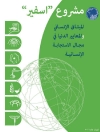This volume is a study of human entanglements with Nature as seen through the mode of haunting. As an interruption of the present by the past, haunting can express contemporary anxieties concerning our involvement in the transformation of natural environments and their ecosystems, and our complicity in their collapse. It can also express a much-needed sense of continuity and relationality. The complexity of the question—who and what gets to be called human with respect to the nonhuman—is reflected in these collected chapters, which, in their analysis of cinematic and literary representations of sentient Nature within the traditional gothic trope of haunting, bring together history, race, postcolonialism, and feminism with ecocriticism and media studies. Given the growing demand for narratives expressing our troubled relationship with Nature, it is imperative to analyze this contested ground.
“Chapter 6” is available open access under a Creative Commons Attribution 4.0 International License via link.springer.com.
Tabella dei contenuti
1.Haunting and Nature: An Introduction.-2. Microgothic: Microbial Aesthetics of Haunted Nature.-3. Black Mold, White Extinction: I Am the Pretty Thing That Lives in the House, The Haunting of Hill House, “Gray Matter, ” and H. P. Lovecraft’s “The Shunned House”.-4.Vegetomorphism: Exploring the Material Within the Aesthetics of the Eco Gothic in Stranger Things and Annihilation.-5. An Ecology of Abject Women: Frontier Gothicism and Ecofeminism in Shirley Jackson’s We Have Always Lived in the Castle.-6. Alligators in the Living Room: Terror and Horror in the Capitalocene.-7. Haunted Technonature: Anthropocene Coloniality in Ng Yi-Sheng’s Lion City (2018).-8. Haunted Nature, Haunted Humans: Intelligent Trees, Gaia, and the Apocalypse Meme.-9.The Global Poltergeist: COVID-19 Hauntings
Circa l’autore
Sladja Blazan is Assistant Professor of American Studies at the University of Würzburg, Germany. Her areas of research include speculative fiction, critical posthumanism, critical refugee studies, and migration as a literary topic.












